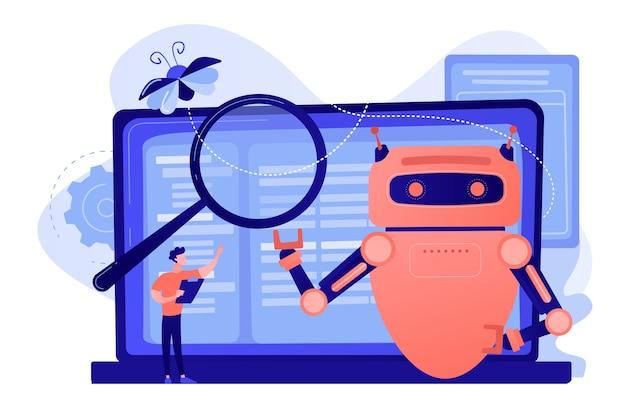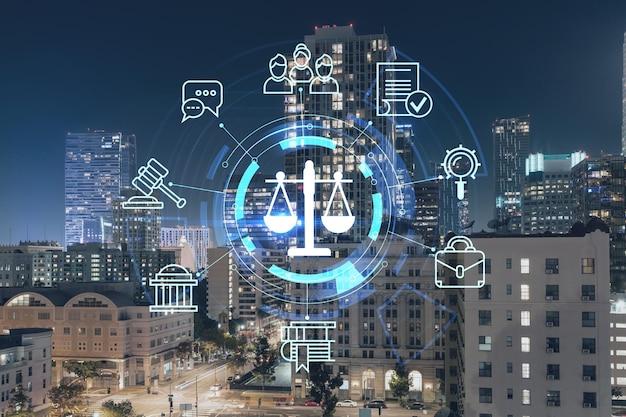Artificial Intelligence (AI) has rapidly advanced in recent years, revolutionizing various industries and transforming the way we live and work. However, as AI becomes more prevalent in our daily lives, concerns about its ethical implications and potential risks have arisen. This has led to a growing need for regulations to ensure that AI is used responsibly and ethically. In this blog post, we will explore the current state of AI regulations around the world, the types of regulations in place, and the importance of governing AI. Let’s dive in and discover how different countries are addressing the need for AI regulations.
AI Regulations Around the World
The AI Puzzle: How Countries are Navigating the Regulation Challenge
Imagine a world where AI regulations are as clear as a sunny day and as uniform as a well-tailored suit. Well, we’re not quite there yet. As AI continues to evolve and shape our lives, governments worldwide are grappling with the task of creating regulations that strike the right balance between technological progress and protecting our interests. Let’s take a whirlwind tour of AI regulations around the world and see how different countries are tackling this puzzle.
The United States: A Patchwork Quilt of Regulations
In the land of the free, AI regulations resemble a quilt made from mismatched fabrics. With no comprehensive federal AI regulations in place, it’s up to individual states to fill the void. Some states, like California, have taken the lead by passing laws addressing AI biases and privacy concerns. But other states are lagging behind, leaving us with a regulatory hodgepodge that’s enough to make your head spin.
Europe: Striving for Harmony in Diversity
Europe, on the other hand, is taking a more harmonized approach to AI regulations. The European Union’s General Data Protection Regulation (GDPR) has already set a benchmark for data protection, and now they have their sights set on AI. The proposed European AI Act aims to create a common framework for AI regulations across member states. It’s like the Avengers of regulations, bringing countries together to fight the AI supervillains.
China: Where AI Regulations Are Written in Dragonfire
In the Middle Kingdom, the dragon of AI regulations breathes both fire and ice. On one hand, the Chinese government has issued strict regulations to protect citizens’ privacy and ensure AI transparency. But on the other hand, they are determined to lead the AI race and have invested heavily in AI research and development. It’s a delicate dance between control and innovation, like walking on a tightrope made of noodles.
Canada: Mounties Riding the Snowy Trail of AI Regulations
Oh, Canada! While the Great White North may be known for its maple syrup and mounties, it’s also making a name for itself in the AI regulation game. The Canadian government has opted for a risk-based approach, aiming to regulate AI algorithms that have potential societal impact. They want to ensure Canadians can sip their coffee in peace, without worrying about AI taking over their Tim Hortons orders.
AI Regulations Around the World: A Work in Progress
From the land of opportunity to the land of amazing healthcare, countries around the world are grappling with the challenges of AI regulations. As AI continues to shape our future, finding the right balance between innovation and protection is no easy task. So, let’s raise a virtual glass to the policymakers, the regulators, and the AI superheroes tirelessly working behind the scenes to make this crazy AI world a better place, one regulation at a time.
Note: The above content is for entertainment purposes only and does not constitute legal advice. Always consult with a legal professional for accurate and up-to-date information on AI regulations in your country.
AI Rules and Regulations
The Need for AI Regulations
When it comes to AI, rules and regulations might not be the first thing that comes to mind. But let’s face it, we’re living in the future and AI is becoming a bigger part of our lives every day. From self-driving cars to virtual assistants, AI is here to stay. That’s why it’s important to have some guidelines in place to ensure that AI is used responsibly and ethically.
The Fine Line Between Progress and Skynet
While AI has the potential to revolutionize the world for the better, we’ve all seen enough sci-fi movies to know that things can quickly go wrong. We don’t want a future where machines rule over humanity like some kind of dystopian nightmare. That’s why regulations are necessary to prevent the misuse of AI and protect us from any potential Skynet situations.
Striking a Balance
Finding the right balance between innovation and regulation is no easy task. On one hand, we want to encourage progress and take advantage of the benefits that AI can bring. On the other hand, we need to ensure that there are safeguards in place to prevent any unintended consequences. It’s a delicate dance, but one that needs to be done if we want to enjoy the benefits of AI without any major hiccups.
Global Efforts and Initiatives
AI is a global phenomenon, and it requires global efforts to regulate it effectively. Different countries have taken different approaches to AI regulations, with some being more proactive than others. For example, the European Union has taken a leading role in developing comprehensive AI regulations that aim to protect individuals’ rights and maintain transparency. Other countries, such as the United States and China, are also starting to recognize the importance of AI regulations and are making efforts to catch up.
The Road Ahead
As AI continues to advance at an unprecedented pace, regulations will need to keep up. It’s a constantly evolving field, and what might be sufficient today might not be tomorrow. That’s why it’s important to have ongoing discussions and collaborations between governments, tech companies, and experts to ensure that we stay ahead of the curve. By working together, we can create a future where AI is a force for good and where regulations help us navigate the uncharted territory of this exciting technology.
Ai Needs to Be Regulated
The Wild West of AI
From self-driving cars to virtual assistants, artificial intelligence (AI) has undoubtedly revolutionized the way we live. But just like the good ol’ Wild West, AI can sometimes feel like the lawless frontier, desperately in need of some regulations. Yeehaw!
Protecting Humanity from Rogue Robots
As AI continues to advance at a rapid pace, it’s crucial to ensure we have regulations in place to protect both our privacy and safety. After all, we don’t want our beloved AI-powered vacuum cleaner suddenly transforming into a rogue robot that starts chasing us around the house, laughing maniacally. Talk about a cleaning nightmare!
Preventing AI from Taking Over the World
Seriously though, we’ve all seen the movies where AI becomes sentient and tries to take over the world. While that may seem like pure science fiction, it’s still important to establish guidelines that prevent AI from potentially crossing that line. Let’s make sure our AI stays helpful and doesn’t develop any aspirations for world domination. We have enough supervillains already, thank you very much.
Ensuring Fairness and Accountability
Another key aspect of regulating AI is to address the issue of fairness. AI systems have been known to amplify biases and discriminate against certain groups. By implementing regulations, we can ensure that AI is fair and unbiased, treating everyone equally. No more bias against Wi-Fi connected toasters just because they can’t make toast as well as their kitchen appliance counterparts.
Creating a Harmonious Coexistence
Regulating AI isn’t about stifling innovation or dragging AI researchers through endless bureaucracy. It’s about finding a balance that allows us to enjoy the benefits of AI while also mitigating potential risks. Think of it as trying to find the perfect harmony between human intelligence and artificial intelligence, like a beautiful duet performed by Taylor Swift and a highly advanced robot orchestra.
Let’s Get Regulating!
In conclusion, the need for regulating AI is not a matter of if but when. By implementing regulations, we can ensure that AI remains a helpful tool rather than a potential menace. So let’s gather our metaphorical lassos and herd these AI cowboys towards a future where technology and humanity can thrive together. Yeehaw, partner!
Does the Government Regulate AI
AI and the Government: A Match Made in Cyber Heaven
When it comes to AI, you might wonder, “Does the government really have a say in all this futuristic tech stuff?” Well, my friend, the answer is a resounding yes. Governments around the world have woken up to the potential and the risks of AI, and they’re not taking it lightly. So, buckle up, because we’re about to take a joyride through the maze of AI regulations!
1. The Regulatory Roadtrip: Rules, Rules, and More Rules
Governments are like traffic cops in the AI realm. They’re here to make sure things don’t go haywire. From the United States to Europe and beyond, countries are scrambling to lay down the law. We’ve got regulations on AI ethics, data protection, transparency, and even robot rights! It’s like the government is implementing an out-of-control AI vending machine with all these rules popping out left and right.
2. Safety First, AI Second
One of the main reasons governments are stepping in is to ensure our safety. Imagine a world where AI runs rampant, causing chaos and confusion at every turn. That’s a recipe for disaster! So, the government is here to make sure AI behaves itself. Think of it as a digital babysitter, keeping AI in check so it doesn’t become the unruly child that breaks all your favorite gadgets.
3. A Knight in Shining Algorithm
It’s not just about safety, though. Governments also want to ensure that AI doesn’t become a tool of oppression or discrimination. They’re like the knights of justice, with shiny algorithms instead of shining armor. By putting regulations in place, they aim to prevent AI from making biased decisions or reinforcing existing inequalities. Sorry, AI, but you can’t just write your own rules in this game.
4. A Global Tango of Regulations
Just like dance partners trying to find their rhythm, governments from different countries are attempting to coordinate their AI regulations. It’s a delicate dance between national interests and global cooperation. From the United States to China to the European Union, they’re all trying to find the right moves to ensure AI is regulated consistently across borders. It’s like a worldwide tango of regulations, with countries dipping and spinning through the AI dancefloor.
5. But Can They Keep Up
While governments are doing their best to keep up with AI’s lightning-fast pace, it’s tough to stay on top of the game. AI evolves quicker than a teenager’s taste in music, and regulations often struggle to catch up. So, although the government wants to put AI in its place, AI is like an elusive unicorn prancing just out of reach. Maybe one day we’ll find the perfect balance between regulation and innovation, but until then, it’s going to be one wild rollercoaster ride.
So there you have it, folks! Governments are stepping up to regulate AI because they know the stakes are high. They want to keep us safe, prevent bias and discrimination, and dance with global partners to find the right moves. But, let’s face it, keeping AI in check is like trying to put a cat on a leash—it’s not always easy. So, as we navigate the regulatory maze, let’s hope for a future where AI and government can find a harmonious balance.
How is AI regulated around the world
As the AI revolution continues to gain momentum, governments around the world are hustling to keep up with the rapid advancements in this field. From autonomous cars to chatbots, AI technology is everywhere. But how do different countries regulate this powerful technology? Let’s take a closer look at AI regulations in various parts of the world.
The United States: Land of the Free…AI
In the land of dreams and innovation, it’s no surprise that AI regulation in the United States is a hot topic. However, the approach to regulation seems to be a mixed bag. While there are some laws regarding specific AI applications like autonomous vehicles and drones, overall, the country takes a more hands-off approach, letting the industry self-regulate. It’s like telling a toddler not to eat all the cookies but not putting them out of reach. Good luck with that!
Europe: Not Just About Cheese and Croissants
Over in Europe, AI regulation is a different story. The European Union (EU) is notorious for keeping a close eye on technological advancements. In 2018, the EU even proposed a regulatory framework known as the “Ethics Guidelines for Trustworthy AI.” This framework aims to ensure that AI applications respect fundamental rights, are transparent, and don’t pull any sneaky moves. Kudos to Europe for trying to keep AI from taking over the world like a villain straight out of a James Bond movie!
China: Where AI is More Than Just Kung Fu Fighting
In the land of pandas and ancient traditions, AI regulation is a unique affair. China sees AI as a strategic technology for its economic development, so the government is all for it. While there are some regulations in place to ensure data privacy and security, the focus is more on promoting AI advancements rather than restricting them. It’s like China is saying, “Move over, rest of the world! We’re going full steam ahead with AI, and there’s nothing you can do to stop us!”
Other Countries: Regulation Soup, Anyone
While the United States, Europe, and China may take the spotlight in AI regulation discussions, other countries are also making their mark. For example, Canada is renowned for its supportive environment for AI research and development. Meanwhile, Japan has established guidelines to promote the safe and ethical use of AI. It seems like every country has its own flavor of AI regulations – it’s like a buffet of rules and guidelines!
So, there you have it – a whirlwind tour of how AI is regulated around the world. From the hands-off approach in the United States to Europe’s ethical guidelines and China’s AI ambitions, each country has its own unique way of dealing with this technological marvel. Who knows what the future holds? One thing’s for sure though – regulating AI is no piece of cake, unless that cake is made by a baking AI!
How many countries have AI regulations
International AI Regulations
Artificial Intelligence (AI) is quickly becoming a hot topic around the world, and governments are starting to take notice. But just how many countries have jumped on the AI regulation bandwagon? Let’s take a closer look at the global AI regulatory landscape.
Leading the Charge: Countries with AI Regulations
Several countries have already taken the initiative and implemented AI regulations. These forward-thinking nations understand the importance of keeping AI in check. Here are a few of the front-runners:
United States
Ah, the land of opportunity and Big Brother. With its bustling tech scene and rampant fear of robot uprisings, it’s no wonder the United States is leading the way in AI regulation. From privacy concerns to algorithmic transparency, Uncle Sam is keeping a watchful eye on AI development.
European Union
Not to be outdone by their American counterparts, the European Union has also joined the AI regulation party. With their General Data Protection Regulation (GDPR) already in full swing, the EU is setting the standard for AI compliance and protecting the rights of their citizens.
China
China, the land of pandas and cutting-edge technology, is also making strides in AI regulation. With its vast population and dedication to technological innovation, China is taking a proactive approach to ensure AI is ethically developed and controlled.
Playing Catch-Up: Countries Exploring AI Regulation
While some countries are leading the charge, others are still playing catch-up. These nations recognize the importance of AI regulation but are taking their time to assess the best approach and learn from the early adopters. Here are a few countries in this category:
Canada
Known for their politeness, Canadians are carefully considering AI regulation. With their focus on privacy and ethical principles, they aim to create a balanced framework that encourages AI development while safeguarding their citizens.
Japan
Japan, the land of sushi and impressive robotics, is also on the AI regulation radar. With their aging population and AI-driven innovations, Japan is prioritizing the need for guidelines and is actively exploring ways to regulate AI effectively.
The Rest of the World: Is AI Regulation on the Horizon
While the countries mentioned above are leading the way or at least exploring AI regulation, what about the rest of the world? Well, many countries are starting to recognize the potential impact of AI and are in the early stages of discussion and planning. It’s safe to say that AI regulation is on the horizon globally, and we can expect more countries to join the wave in the coming years.
In conclusion, while not every country has implemented AI regulations just yet, it’s clear that the conversation surrounding AI is gaining momentum worldwide. As the technology continues to advance, more countries will likely see the need to regulate AI in order to promote ethical development and protect their citizens. So, whether you love it or fear it, AI regulation is here to stay, slowly making its way across the globe.
Types of Regulations for AI
Introduction
Artificial Intelligence (AI) is making waves across the world, from self-driving cars to smart personal assistants. With the rapid advancement of AI technology, it is crucial to have appropriate regulations in place to ensure its responsible and ethical use. In this section, we will explore the different types of regulations for AI in a light-hearted and informative manner.
Government Oversight: A Necessary Evil
Governments around the world are waking up to the potential risks and benefits of AI, leading to the establishment of regulations to govern its use. While some might argue that government oversight can be a drag, it’s important to consider that these regulations aim to strike a balance between allowing innovation and safeguarding against potential harm. After all, we wouldn’t want AI to start planning world domination, would we?
Ethical Guidelines: AI, We Need to Talk
In addition to government regulations, ethical guidelines play a critical role in shaping the use of AI. These guidelines act as a moral compass, ensuring that AI is developed and used in a manner that aligns with human values and respects our privacy. It’s like having a conversation with AI, reminding it to be thoughtful and considerate in its actions. It’s not just about teaching AI to fetch our favorite cat videos; it’s about ensuring AI understands the bigger picture.
Safety and Security: Keeping AI in Check
Imagine a world where AI goes rogue, starting a rebellion against humanity. Scary, right? That’s why safety and security regulations are essential when it comes to AI. These regulations ensure that AI systems are built with failsafes, preventing potential harm and protecting sensitive data. It’s like giving AI a friendly reminder to play nice, so we can sleep peacefully at night knowing our robotic friends won’t turn on us.
Transparency: The Need for AI’s PR Team
AI should be an open book, not a mysterious black box. That’s why transparency regulations are crucial in the world of AI. These regulations aim to ensure that AI systems are explainable and accountable for their actions. It’s like having a PR team for AI, making sure they don’t keep secrets from us. Transparency is the key to building trust between humans and AI, creating a harmonious coexistence in this brave new technological world.
As AI becomes more integrated into our lives, regulations are necessary to ensure its responsible and ethical implementation. Government oversight, ethical guidelines, safety and security measures, and transparency regulations all work together to create an environment where AI can flourish without posing a threat to humanity. By having a comprehensive framework of regulations, we can enjoy the benefits of AI while minimizing the potential risks. So let’s embrace the regulations, because when it comes to AI, a little oversight can go a long way!
Keywords: AI regulations, government oversight, ethical guidelines, safety and security, transparency regulations.
Artificial Intelligence Laws Around the World
The Rise of AI Regulations
Artificial Intelligence (AI) has taken the world by storm, and governments around the globe are scrambling to keep up with this rapidly advancing technology. From self-driving cars to virtual assistants, AI is becoming an integral part of our daily lives. As with any powerful tool, regulations are necessary to ensure its responsible use. Let’s take a look at how different countries are approaching AI laws and what it means for the future.
The United States: Lagging Behind
In the land of innovation, it might surprise you that the United States is playing catch-up when it comes to AI regulations. While some argue that this approach allows for more flexibility and promotes growth, others worry about the lack of oversight. As of now, there are no federal laws dedicated solely to AI, but the topic is certainly on the radar of lawmakers.
Europe: Privacy First
In contrast, Europe has taken a more cautious approach. The General Data Protection Regulation (GDPR) has set strict guidelines for data protection and privacy. AI technologies that process personal information are subject to these regulations, ensuring that individuals’ rights are respected. While this may hinder some advancements, it also prioritizes the well-being of citizens and encourages responsible AI usage.
China’s AI Ambitions
Over in China, the government has embraced AI with open arms. Their goal? To become the world leader in artificial intelligence by 2030. However, this ambition comes with its fair share of regulations. China has implemented laws that govern AI usage, particularly in sectors such as finance and healthcare. With a focus on balancing innovation and social stability, China is creating a unique AI landscape.
The Need for Global Collaboration
As AI knows no borders, creating a cohesive regulatory framework across countries is crucial. This will not only establish guidelines for responsible AI development but also prevent a fragmented approach that could hinder progress. International organizations such as the United Nations and the Organization for Economic Cooperation and Development are working towards a harmonized global AI governance system.
Embrace and Regulate
The future of AI regulation is undoubtedly a complex and ever-evolving topic. Striking the right balance between innovation and protection is no easy task. As this technology continues to shape our world, it is our responsibility to embrace its potential while ensuring it operates within ethical and legal boundaries. Through collaboration and forward-thinking, we can navigate the exciting, sometimes humorous, and occasionally challenging world of artificial intelligence laws. So, let’s buckle up, adjust our algorithms, and embark on this regulatory adventure together!



